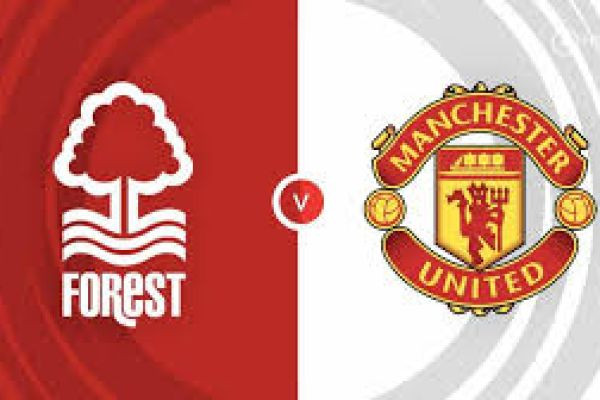Fixture: Nottingham Forest vs. Manchester United Date: Saturday, November 1, 2025 Venue: The City Ground, Nottingham
This Premier League clash pits a Nottingham Forest side, newly under the management of Sean Dyche, against a Manchester United team that appears to be finding form under Rúben Amorim. The match is a study in contrasts: Dyche's emphasis on defensive solidity and directness versus Amorim's fluid, possession-based approach.
1. Nottingham Forest: The Dyche Doctrine
Since Sean Dyche's arrival, the immediate change has been the establishment of a robust defensive structure. While his tenure is new, the tactical blueprint is clear: resilience, aggressive pressing in the midfield third, and lethal direct counter-attacking.
Expected Formation: $4-4-2$ (Defending) / $4-2-3-1$ (Attacking)
Defensive Focus and Midfield Press: Forest will likely deploy a compact $4-4-2$ when out of possession. The key is denying central penetration, forcing United's play wide, and then using the flanks as pressing traps.
The Murillo Factor: Murillo and his center-back partner will be crucial in dealing with United's forward runners. Under Dyche, the defense must be physically dominant and clear-headed.
Wing Play: Full-backs will tuck in tight to the center-backs when defending deep. The wide midfielders (e.g., Hudson-Odoi, Ndoye) are tasked with tracking Diogo Dalot and Luke Shaw, ensuring no easy crosses.
Offensive Transition: Forest's attacking threat comes from quick verticality. Dyche’s system prioritizes getting the ball forward fast, often bypassing the midfield entirely.
Target Man: The presence of a striker like Igor Jesus or, if fit, Taiwo Awoniyi will be essential for holding up the ball and bringing attacking midfielders like Morgan Gibbs-White into play.
Set-Pieces: As always with a Dyche side, set-pieces (both offensive and defensive) will be a massive battleground. United's recent defensive vulnerability in these areas is a major opportunity for Forest.
2. Manchester United: Amorim's Resurgent Fluidity
Rúben Amorim appears to have settled on a core tactical identity, highlighted by a recent three-game winning streak that included a 4-2 win against Brighton. United play a highly fluid, adaptable system centered around rapid ball circulation and positional rotations.
Expected Formation: $3-4-3$ or $3-4-2-1$
Build-up and Central Dominance: United starts with a back three (potentially featuring Maguire/De Ligt/Shaw) to facilitate clean progression. The wing-backs (Dalot and one other) push high, and the midfield pivot (Casemiro/Mount or Mainoo) controls the tempo.
The Casemiro-Fernandes Link: Casemiro's ability to break lines with vertical passes combined with Bruno Fernandes's roaming $8/10$ role is key to unlocking tight defenses. Fernandes's movement pulls center-backs out of position.
Attacking Asymmetries: United's attack is heavily reliant on the pace and technical skill of players like Bryan Mbeumo and Matheus Cunha, who operate in the half-spaces and wide areas.
The Mbeumo Threat: Mbeumo often takes up a wide starting position but cuts inside to run at the opposition's center-backs or link play. His recent goal-scoring form makes him the focal point of United’s attacking threat.
Overloading the Flanks: Amorim’s system aims to create $3v2$ or $2v1$ situations on the flanks, using the wing-back, the wide forward, and the adjacent central midfielder to isolate the opposing full-back.
Defensive Press: United's press is aggressive, aiming to win the ball back high and quickly, putting immediate pressure on Forest’s full-backs and the center of the pitch before Dyche's side can launch a direct counter.
3. Key Tactical Battles
Tactical Duel | Forest’s Strategy | Man Utd’s Strategy | Key Players |
|---|---|---|---|
Forest's Directness vs. United's Back Three | Launch long balls quickly to the target man (Igor Jesus) to win flick-ons and force the United defense to turn and track back immediately. | The back three (especially Maguire/De Ligt) must be physically dominant in aerial duels and disciplined in stepping up to cover the central area. | Igor Jesus, Harry Maguire, Murillo |
Midfield Control | Tight, compact $4-4$ block, denying space to Bruno Fernandes and ensuring Casemiro cannot easily dictate the tempo. Force turnovers in the center circle. | Overload the midfield with the pivot and a dropping forward, using fast lateral passes to pull the Forest block out of shape before attacking the half-spaces. | Casemiro, Bruno Fernandes, Douglas Luiz, Morgan Gibbs-White |
Wide Attacking Threat | Full-backs (e.g., Savona, Williams) must prevent Diogo Dalot from getting into advanced crossing positions and stop Mbeumo from isolating the center-backs. | Dalot and the opposite wing-back need to be constantly high, pinning the Forest wide midfielders back and providing width for the central attackers. | Diogo Dalot, Bryan Mbeumo, Nuno Savona, Callum Hudson-Odoi |
Set-Pieces | Crucial for Forest. Use the height of Milenković and Murillo to attack the box and exploit any moments of uncertainty in United's defense. | Maintain flawless organization, use zonal and man-marking hybrid systems, and ensure the goalkeeper commands the area decisively. | Willy Boly, Milenković, Matz Sels |
4. Prediction
Nottingham Forest under Sean Dyche will be highly disciplined, resilient, and difficult to break down, particularly at the City Ground. Their three successive league victories against United last season will provide immense confidence.
However, Manchester United's attacking unit, particularly their front three and the influence of Bruno Fernandes, is currently generating significant momentum and high-quality chances. If United can quickly circulate the ball and draw Forest's compact lines apart, they have the technical ability to exploit the gaps.
Prediction: Nottingham Forest's defensive improvements will keep it close, but Manchester United's resurgence and depth in attack may prove decisive.
Nottingham Forest $1-2$ Manchester United








